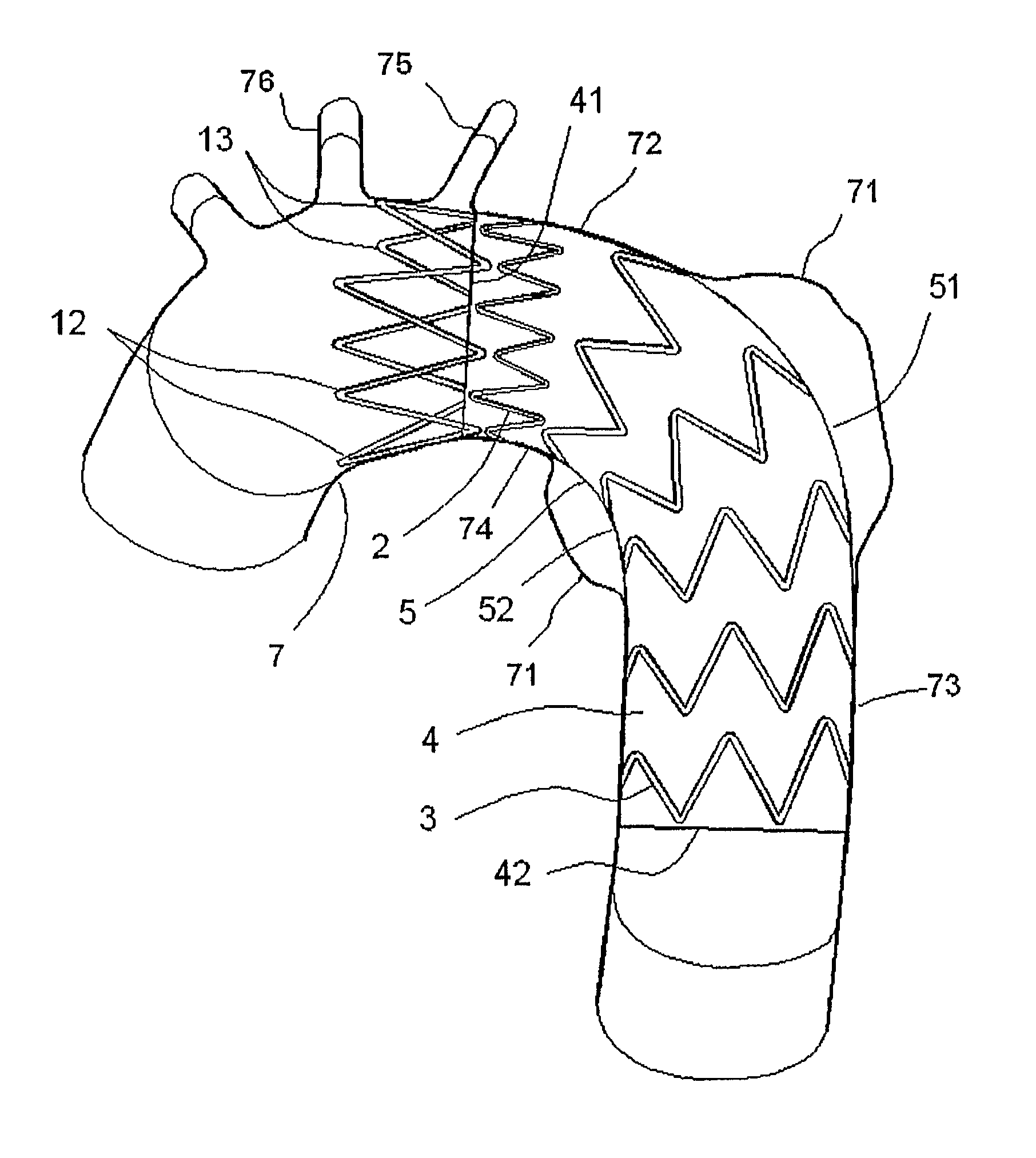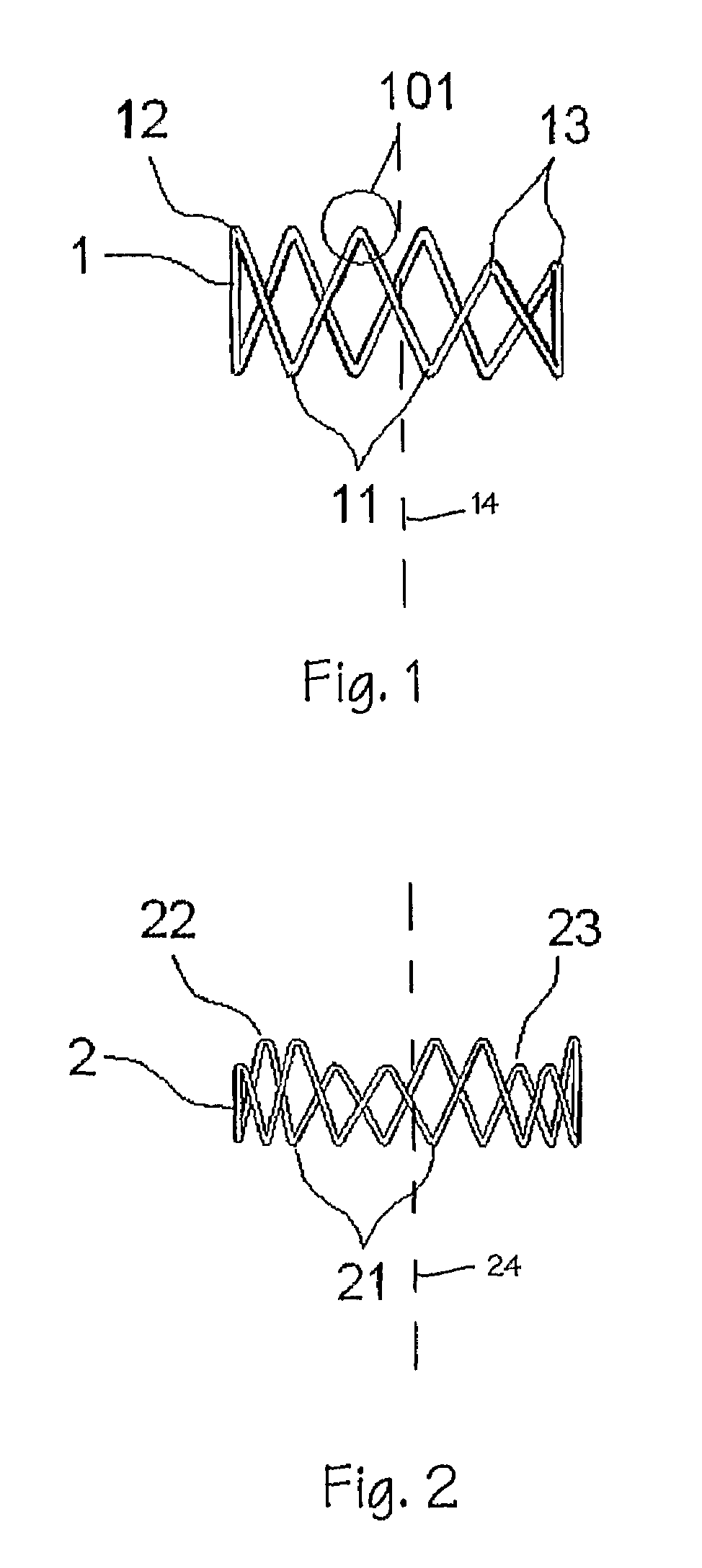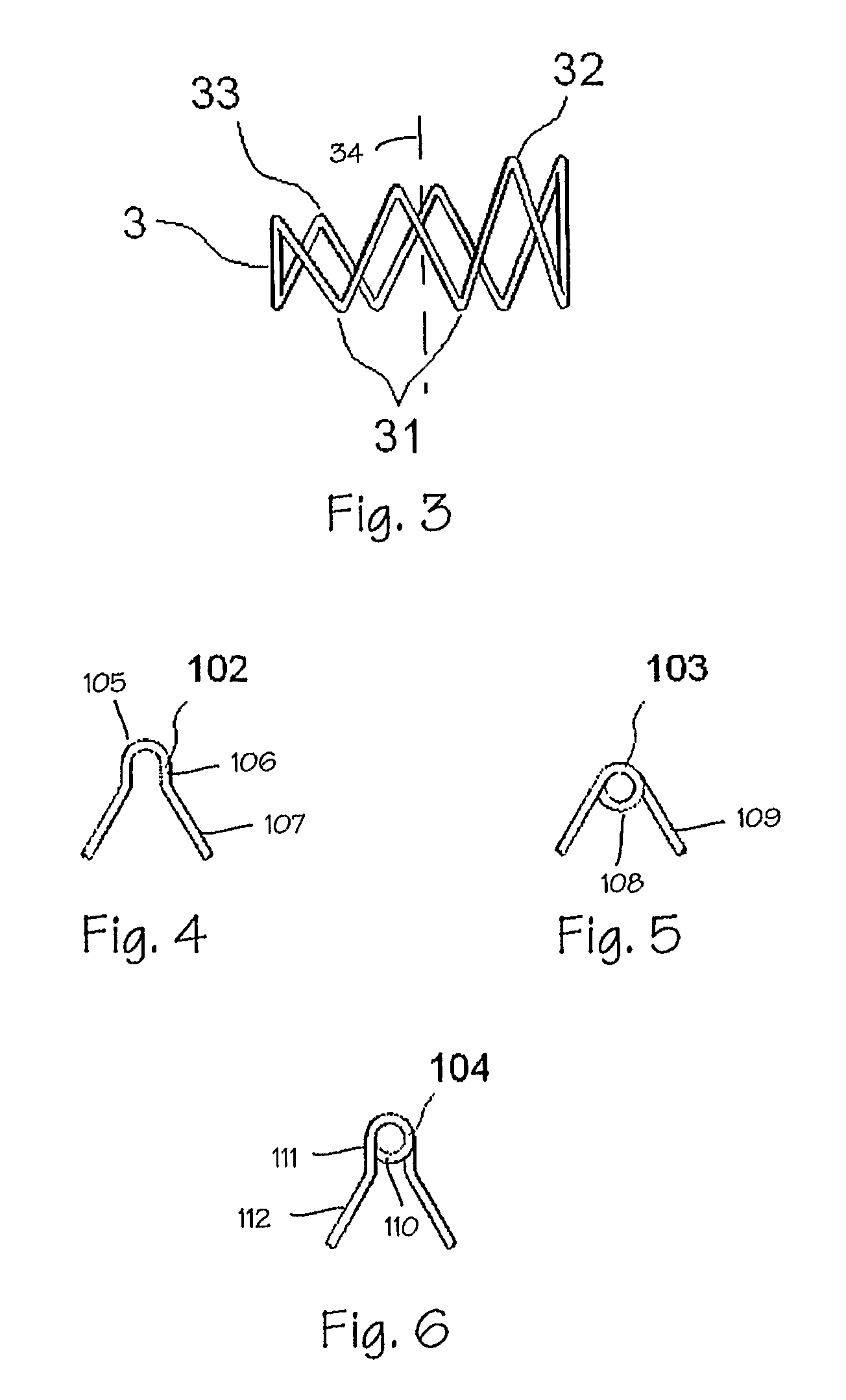Flexible stent-graft
a flexible, stent technology, applied in the field of stent grafts, can solve the problems of reducing the usefulness and applicability of existing stent grafts, affecting the flexibility of stent grafts, and reducing the usefulness of stent grafts for certain procedures, so as to improve flexibility, reduce endoleakage, and enhance the fixation of the vessel wall
- Summary
- Abstract
- Description
- Claims
- Application Information
AI Technical Summary
Benefits of technology
Problems solved by technology
Method used
Image
Examples
Embodiment Construction
[0035]FIG. 1 illustrates an open stent member 1 formed from a single continuous wire and comprising multiple uneven undulations or sine waveforms of differing heights characterized by apexes or crests and troughs. The wire is formed in a tubular or ring-like configuration about a longitudinal axis. Apexes 11, 12, 13 characterize the tubular configuration. The distal apexes 11 or troughs of the open stent member 1 forming the distal circumference of the open stent lie on the same plane approximately horizontal / perpendicular to the longitudinal axis 14. The proximal apexes 12, 13 or crests are arranged along at least two different approximately horizontal / perpendicular to the longitudinal axis providing the undulations or waveforms with two or more different heights. The proximal apexes of the waveforms with the highest wave heights or of the undulations with the longest longitudinal lengths from the proximal apexes to the distal apexes are referred to as the high wave apexes 12 and t...
PUM
 Login to View More
Login to View More Abstract
Description
Claims
Application Information
 Login to View More
Login to View More - R&D
- Intellectual Property
- Life Sciences
- Materials
- Tech Scout
- Unparalleled Data Quality
- Higher Quality Content
- 60% Fewer Hallucinations
Browse by: Latest US Patents, China's latest patents, Technical Efficacy Thesaurus, Application Domain, Technology Topic, Popular Technical Reports.
© 2025 PatSnap. All rights reserved.Legal|Privacy policy|Modern Slavery Act Transparency Statement|Sitemap|About US| Contact US: help@patsnap.com



